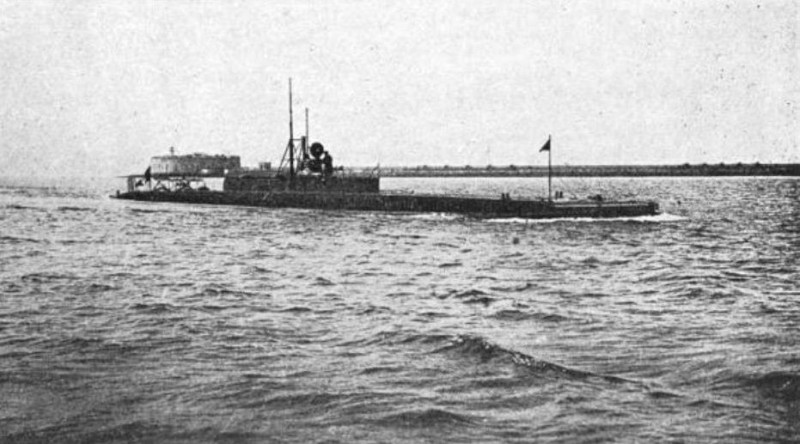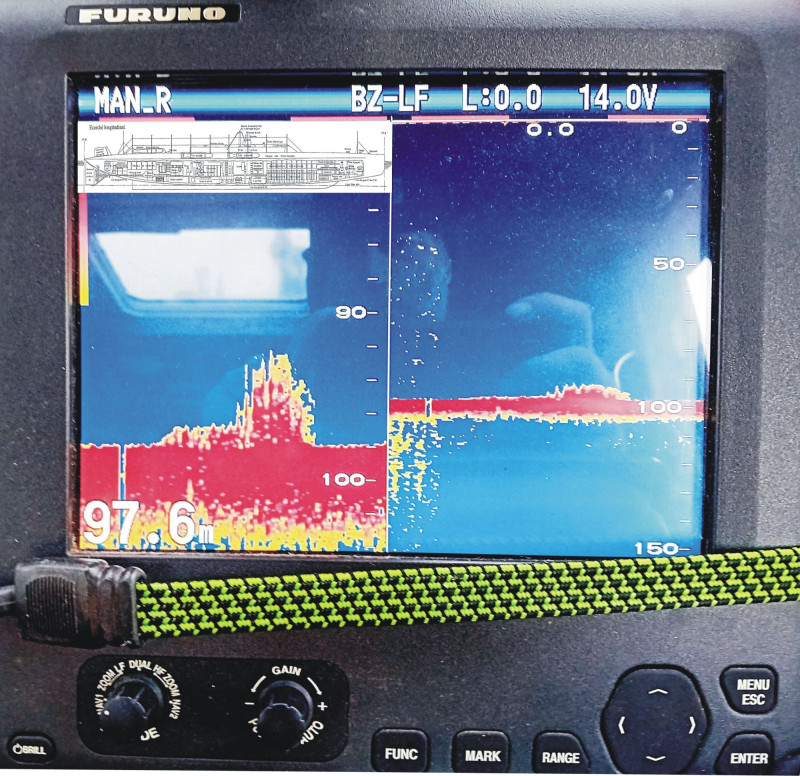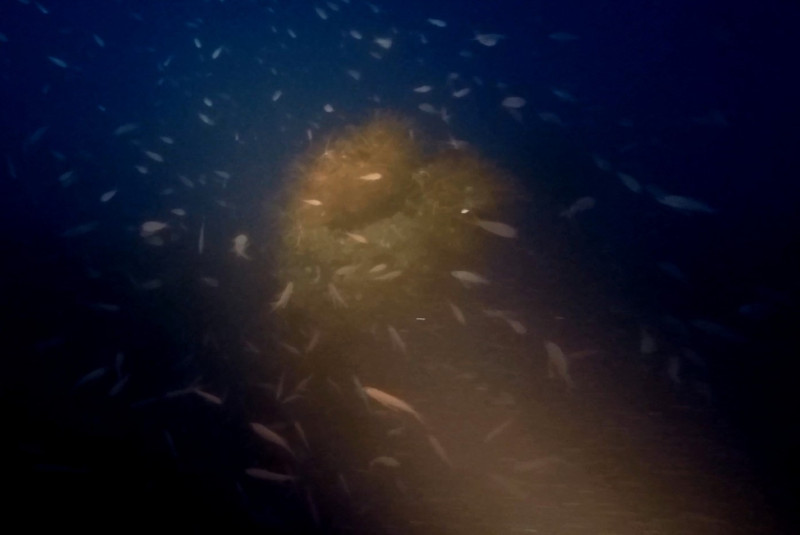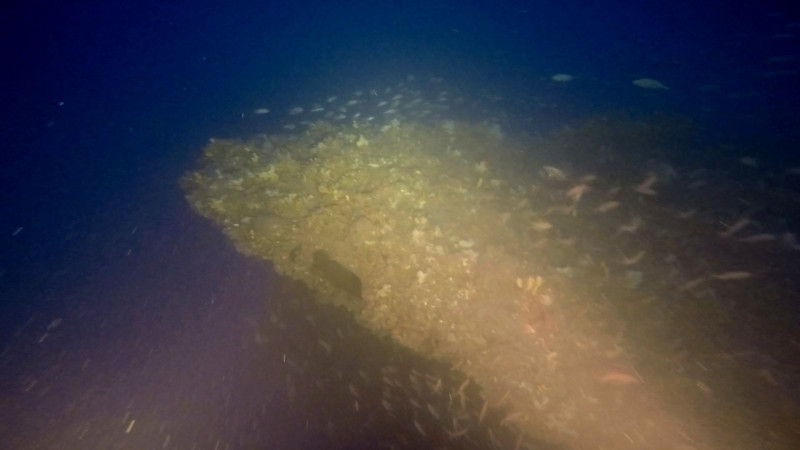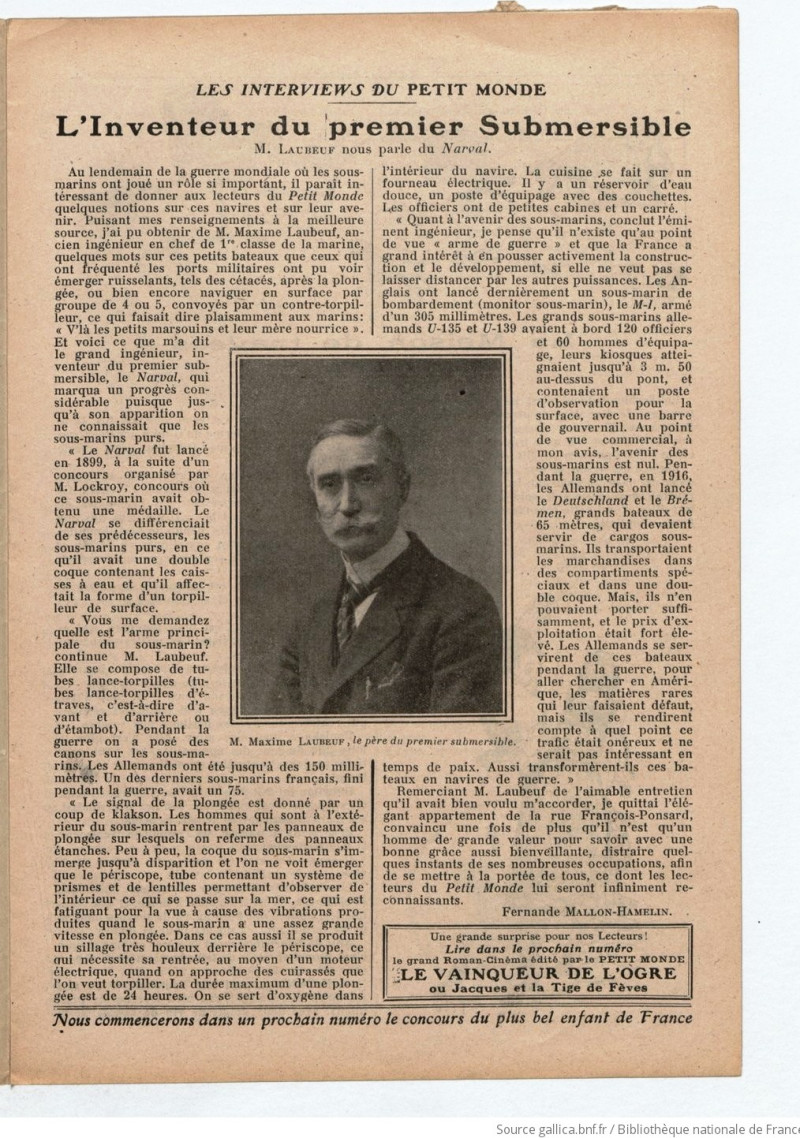The FLOREAL sank in 1918 and was found at a depth of 98 meters – “Her periscopes are down and one of the manholes remains ajar to this day”
The French submarine FLOREAL that sank the 1918 according to World War I to Thermaic Gulf, detected by the underwater research team of Kostas Thoktaridis at a depth of 98 meters in international territorial waters.
With dimensions 51m long and 5m wide and displacement of 553 tons submerged and 404 tons on the surface, had accommodations for 25 crew members.
“In the area of the wreck there were very strong underwater currents and low visibility, typical of the area. The submarine has rested on the muddy bottom of Thermaikos with a slight inclination to the right and has a forward course (slight forward inclination). His periscopes are down. The depth and direction rudders are in the 0 position, while a windbag is caught in the bow of the submarine. The 65mm gun mount can be seen, as well as the torpedo launchers. One of the manholes remains ajar even today” the well-known researcher declares to APE-MPE.
It is worth noting that this is the 6th submarine wreck located and identified by the team.
The surprise ending
At the start of the war FLOREAL joined the French Channel squadrons, with the main mission of anti-submarine patrol. The exigencies of the war brought it to the Mediterranean and Thessaloniki in the spring of 1918, when the capitulation of Russia left the fate of the Russian Black Sea Fleet uncertain and there was the danger of its exit to the Mediterranean under German command.
In the early hours of 2/8/1918, the FLOREAL, accompanied by the destroyer BALLISTE, sailed from Thessaloniki bound for Patras. The weather was clear and the visibility good. The destroyer was 400 meters behind the submarine.
At the same time, the British cargo steamer MAGDA sailed into Thermaikos, accompanied by the mandatory reconnaissance ship HMS HAZEL. MAGDA was ahead, while HMS HAZEL followed in constant zig-zagging as a necessary anti-submarine countermeasure. At 01:30 and while astern and left of MAGDA, HMS HAZEL sighted the silhouette of the small submarine ahead and to starboard at a distance of 100 meters.
Collision was inevitable and a minute later HMS HAZEL rammed FLOREAL. BALISTE immediately rushed to the aid of the stricken submarine and attempted to tow it back to Thessaloniki.
The inflow of water into the submarine was extensive and so it was deemed preferable to head towards the nearest coast of Halkidiki. Despite the efforts, the submarine finally sank at 03:25, in Thermaikos Gulf after being successfully abandoned by all its crew.
106 years after the sinking, the detection
Archival research on the French submarine, in primary sources in the French and British archives, began in March 2014. Just before the expiration of 2023 the team during operations to locate another ship’s lost anchor, found itself near the area that had the submarine is lost. When given the opportunity, after the completion of the work, hydrography was followed by sonar based on the data that had emerged both from the historical research and from the utilization of information from the local professional fishermen.
A target with dimensions similar to the submarine being searched was located and reconnaissance followed with an unmanned underwater vehicle (ROV) (Remote Operated Vehicle). The results were positive and for the first time in the Greek seas a World War I submarine wreck was located and identified. It’s about steam powered French submarine FLOREAL which lies at a depth of 98 meters in international territorial waters.
The first images displayed on the underwater rover’s monitors captured the outline of FLOREAL’s stern with its distinctive shipbuilding design.
The wreck is intact and in excellent condition. “It was as if time had stopped at the moment of its sinking, in 1918” as K. Thoktaridis characteristically mentions.
FLOREAL (Q 54) Pluviôse class submarine
The FLOREAL in particular is considered a rare steam powered submarine with particular shipbuilding and design.
The Pluviose class of submarines of the French Navy, to which FLOREAL also belonged, was essentially the first class of submarines with combat capabilities to enter mass construction (1907-1910). FLOREAL was launched on April 18, 1907 in Cherbourg.
Designed by the innovative French engineer Maxime Laubeuf she was a seaworthy and combat-worthy vessel for the time, with a maximum range of 1390 nautical miles on the surface at a speed of 8.5 knots and a top speed of 12 knots and an armament of 8 torpedoes.
“In the Pluviôse class – to which FLOREAL belonged – two pioneering ideas of its designer Maxime Laubeuf were incorporated. The double hull and the double propulsion system (two steam engines for the ship on the surface and two electric motors for the ship in diving)” explains the officer of P.N. and researcher Spyros Vougidis.
Source: Skai
I have worked as a journalist for over 10 years, and my work has been featured on many different news websites. I am also an author, and my work has been published in several books. I specialize in opinion writing, and I often write about current events and controversial topics. I am a very well-rounded writer, and I have a lot of experience in different areas of journalism. I am a very hard worker, and I am always willing to put in the extra effort to get the job done.


